It must have been one horrific murder perpetrated that July 4, 1958, on the tony Main Line in the Philadelphia suburbs. A successful real estate salesman named Max Kravitz had been found beaten and shot in his home. Soon after, his wife Ethel was charged in his murder.
I can imagine people snatching up their newspapers to read every morsel of information about the killing, speculating on whether she did or didn’t, and offering their own conclusions about what happened. Their interests were likely in high gear up to and through the Kravitz trial, which got started in Norristown, PA, in December of that year.
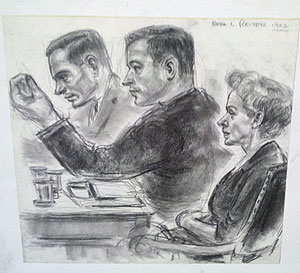
The Philadelphia Inquirer was likely their main source of news because this was a time when newspapers were king. There, they read about the proceedings and saw the sketches of an artist named Freda L. Reiter, who captured on paper the people inside the courtroom as testimony was given.
Thirteen of Reiter’s original sketches came up for auction recently, along with the newspaper clippings of them. Newspapers relied on artists like Reiter to put faces on the drama in the courtroom, where cameras were not permitted. Today, TV stations still use sketch artists. I was watching a late-night news report on the trial of Jerry Sandusky, the Penn State football assistant coach who is accused of sexually abusing young boys, and there on the screen were artist sketches of him and others during the trial.
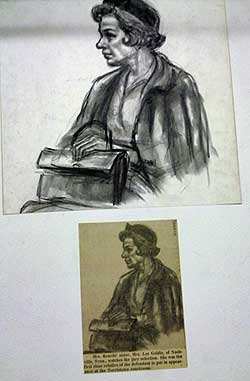
I learned that Reiter was one of the best. Her sketches at auction included the principals in the Kravitz trial: the wife, her sister, the judge, the prosecutors and defense attorneys, among others. These were pencil drawings mounted on poster boards. Also included were pencil and crayon drawings of musicians with the Philadelphia Orchestra. All the works, according to the auction house, were produced from 1958 to 1962.
Reiter was working for the newspaper as a sketch artist in the city and New Jersey when she covered the Kravitz trial. Ethel Kravitz was convicted of second-degree murder and sentenced to serve time at a state women’s prison in Pennsylvania. She was paroled seven years later, still maintaining her innocence and appealing her conviction.
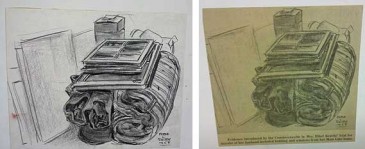
This was not Reiter’s first top-drawer trial. In 1949, she had sketched proceedings in what was called the Silver Abortion trial of a couple charged with performing an illegal operation on the heiress to a grocery-store chain that led to her death.
Reiter would remain with the newspaper until the mid-1960s when she decided to try television. According to a biography submitted by her daughter on the web, “Freda saw the courtroom sketches on television and thought she could also become a TV sketch artist.”
So she applied at ABC-TV, was hired and went on to cover some of the most important cases in the country. She was front-and-center for such trials as Patty Hearst, the Chicago 7 and John Hinckley, according to her daughter. She sketched the execution of Gary Gillmore in the deaths of two men and the wedding of President Nixon’s daughter Tricia, among others.
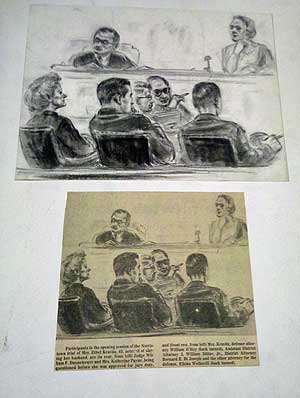
Her most famous sketches were drawn during the Watergate hearings. I came across several of Nixon and Ted Kennedy. One antiquarian bookstore was selling 16 of her original Watergate sketches for $5,800.
“In 1971, she was assigned to a minor trial,” her daughter wrote. “The assignment desk said to pack for maybe, at the most, a week. They had nicknamed it Watergate, since that was the scene of the crime. Freda spent two years in Washington, D.C., covering the many hearings and trials that resulted from that ‘minor trial.’ She swapped drawings with John Erlichmann.”
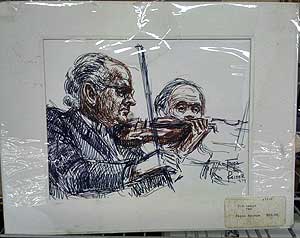
Reiter was more than a sketch artist; she was also a fine artist, who painted portraits, landscapes and still lifes. And she apparently was very prolific. In 1989, Freeman’s Auctioneers in Philadelphia held a sale of a thousand works from her estate, including a study of Supreme Court Justice Thurgood Marshall.
She got into art early. Even as a child growing up and attending school in Philadelphia, she had been identified as a talented artist (along with her twin sister). She attended the Pennsylvania Academy of the Fine Arts and spent several years in Mexico City studying with Diego Rivera, according to his daughter. She died in 1986.

